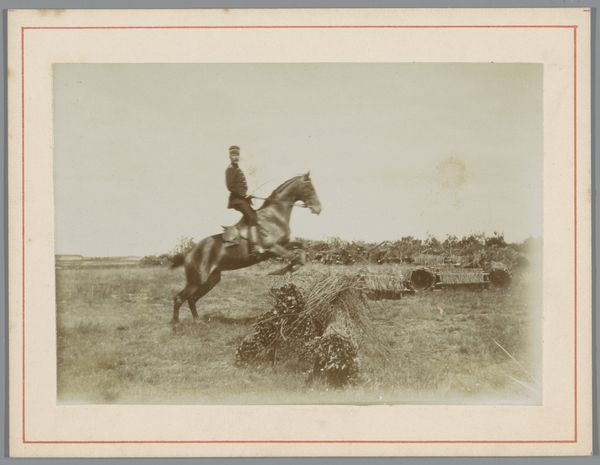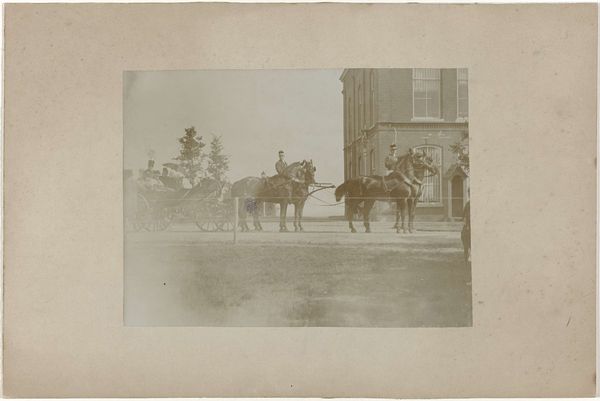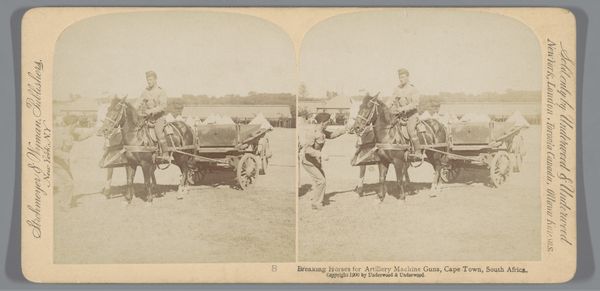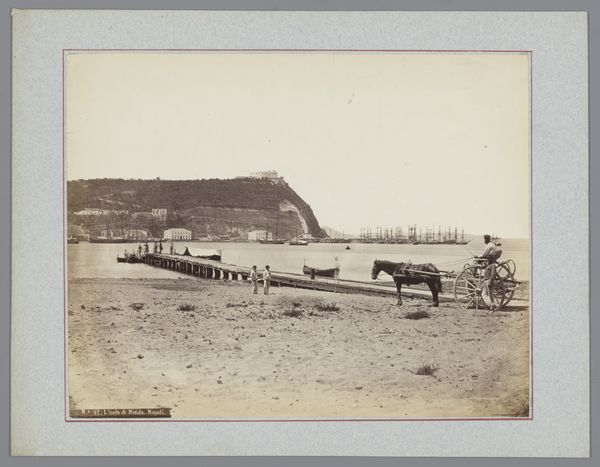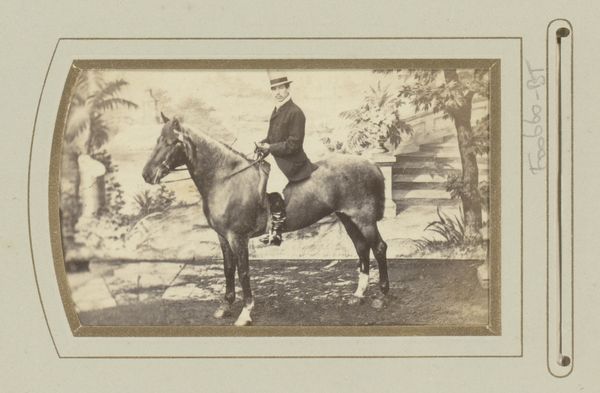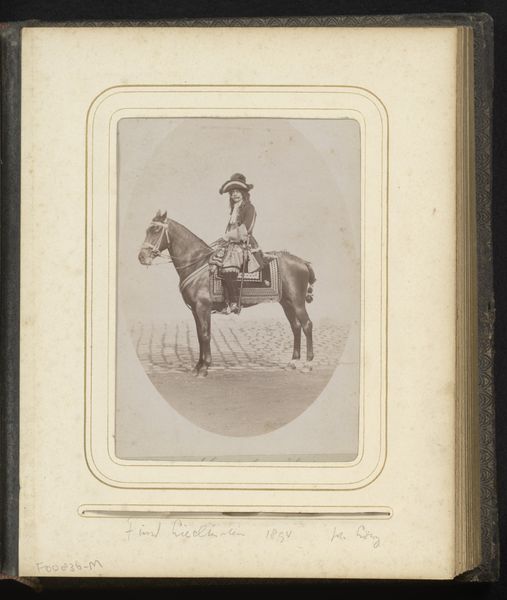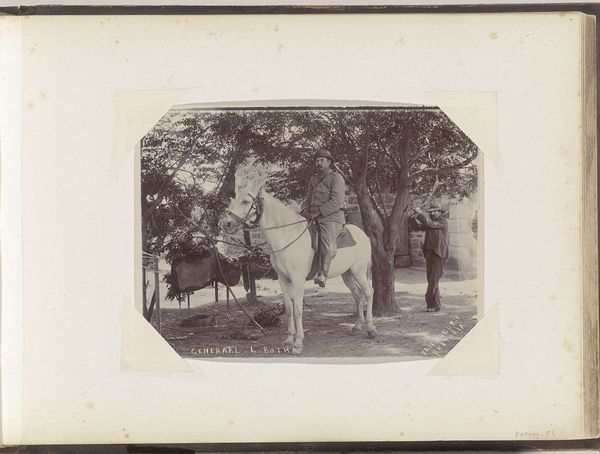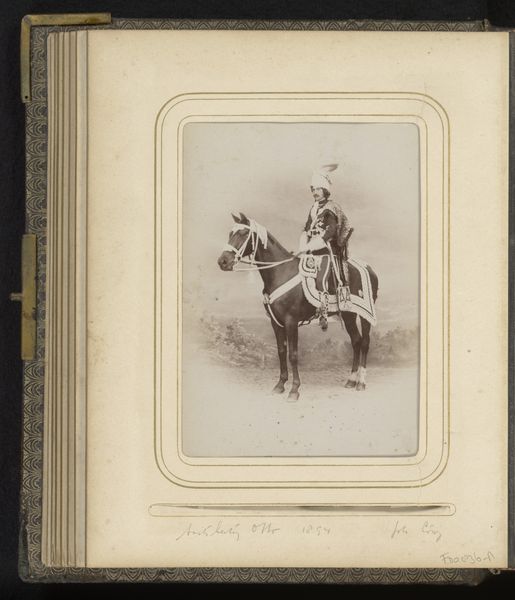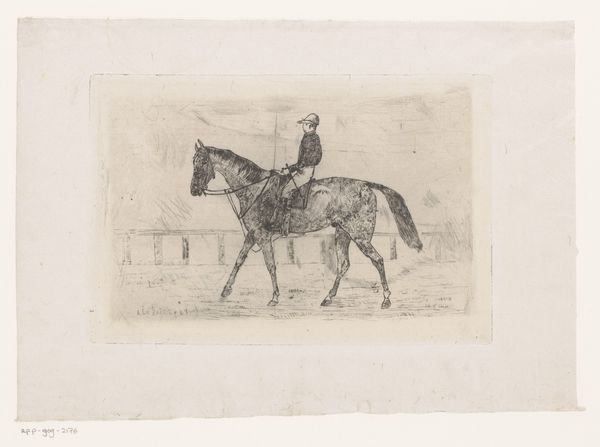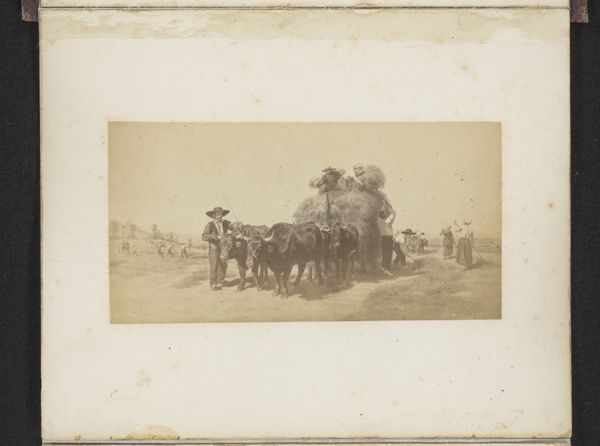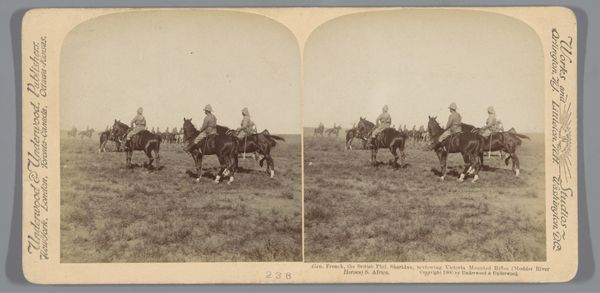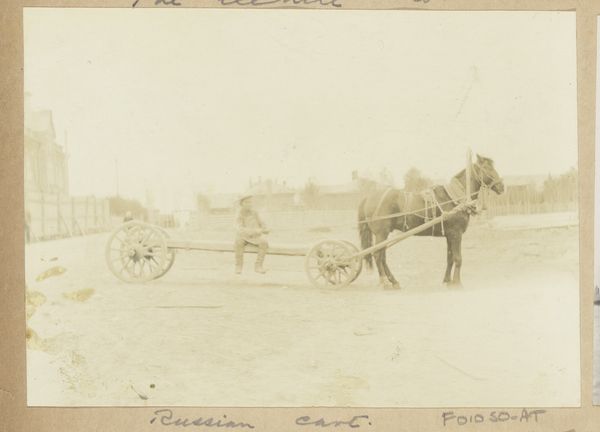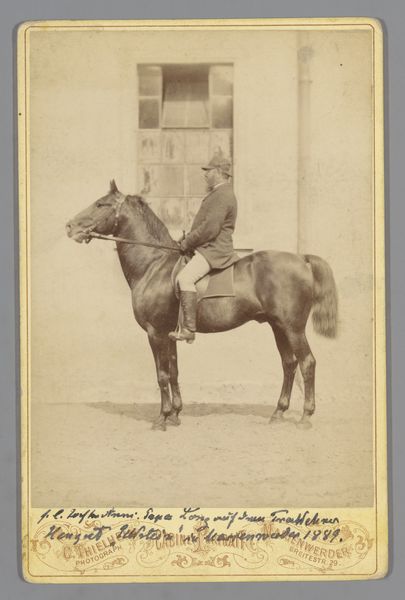
Henk van de Berg neemt op zijn paard Bobbie een horde op het veld achter het Rijksmuseum c. 1896
0:00
0:00
photography, gelatin-silver-print
#
portrait
#
landscape
#
photography
#
gelatin-silver-print
#
genre-painting
#
realism
Dimensions: height 122 mm, width 179 mm, height 168 mm, width 219 mm
Copyright: Rijks Museum: Open Domain
Editor: This is a gelatin-silver print from around 1896 by Hendrik Herman van den Berg, titled "Henk van de Berg takes his horse Bobbie over a hurdle on the field behind the Rijksmuseum". It captures a dynamic scene, but I am curious: what strikes you most about this image? Curator: The immediate appeal lies in understanding the gelatin-silver process. We need to appreciate the chemical manipulation, the specific labor, to fix this instant. Notice how the monochromatic palette, born from material limitations, paradoxically directs our focus. Editor: Are you saying the value of the photograph resides in the technical ability of capturing such a fleeting scene so well? Curator: Precisely. Think about the social context. The rise of photography democratized image-making, previously a realm of painted portraits for the elite. Van den Berg's choice of subject and medium reflects a changing dynamic between accessibility and artistic aspiration. Editor: It is interesting that you draw a parallel to the democratization of images because I also thought the setting may signal wealth or status. Curator: Indeed. Consider also, then, the economic aspects: The cost of equipment, the labor involved, and how the consumption of these images shaped visual culture. Every stage involved materials and decisions, influenced by class. Editor: So the "realism" the museum tag mentioned has less to do with truthful depictions and more with the socio-economic climate, or the ways things were? Curator: Precisely. The subject becomes secondary to the material reality that makes its representation possible. What do you take away from that? Editor: I've never thought about images being linked so strongly to class. I'm definitely seeing this piece—and photography in general—in a new, more critical way. Curator: Understanding how labor, materiality, and economic access define art provides invaluable context. This process itself unveils new readings of seemingly simple images.
Comments
No comments
Be the first to comment and join the conversation on the ultimate creative platform.
